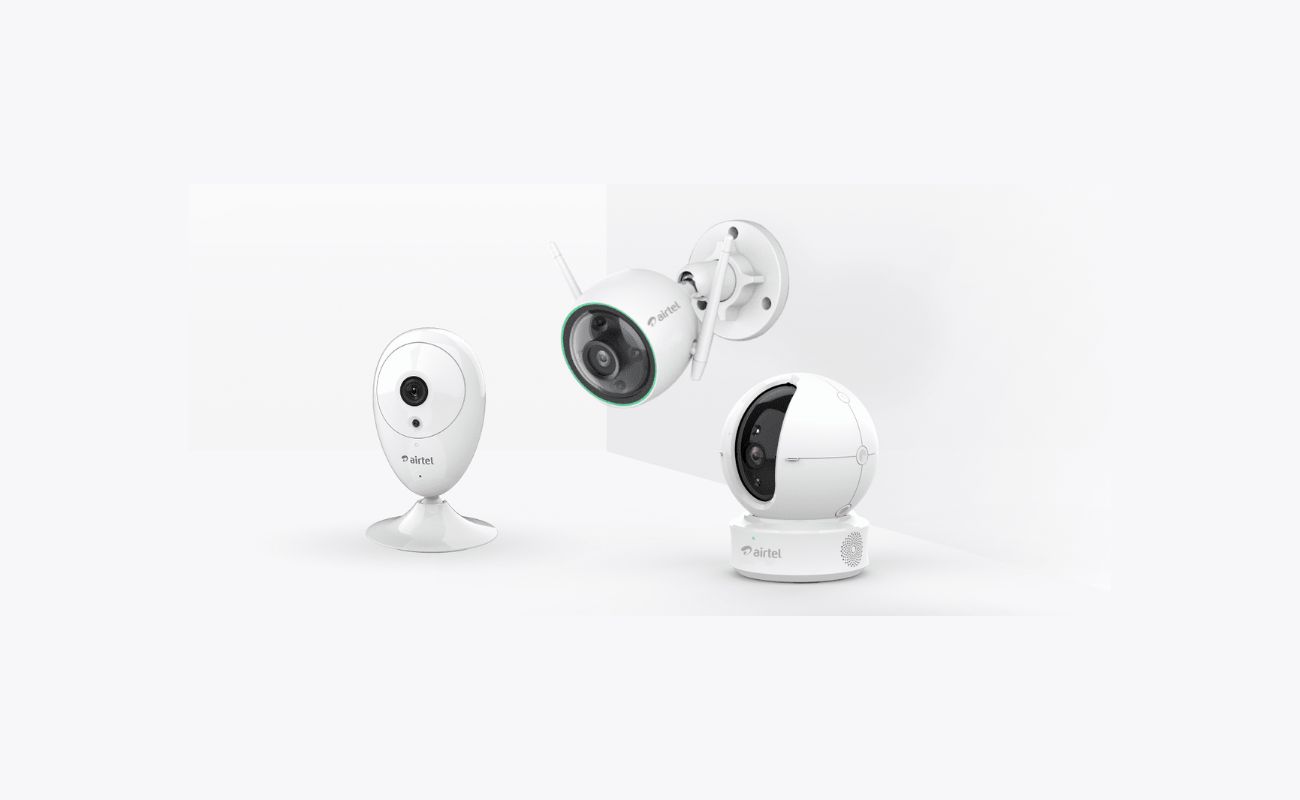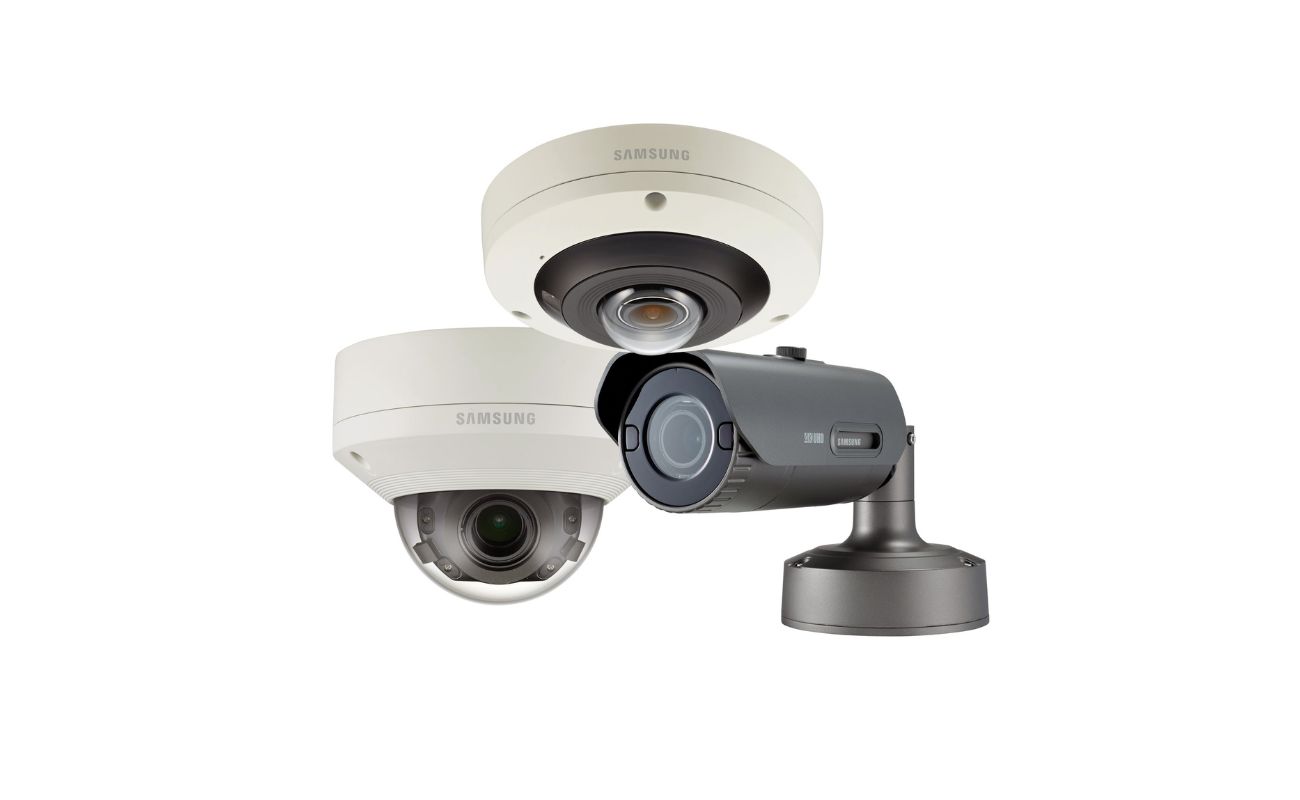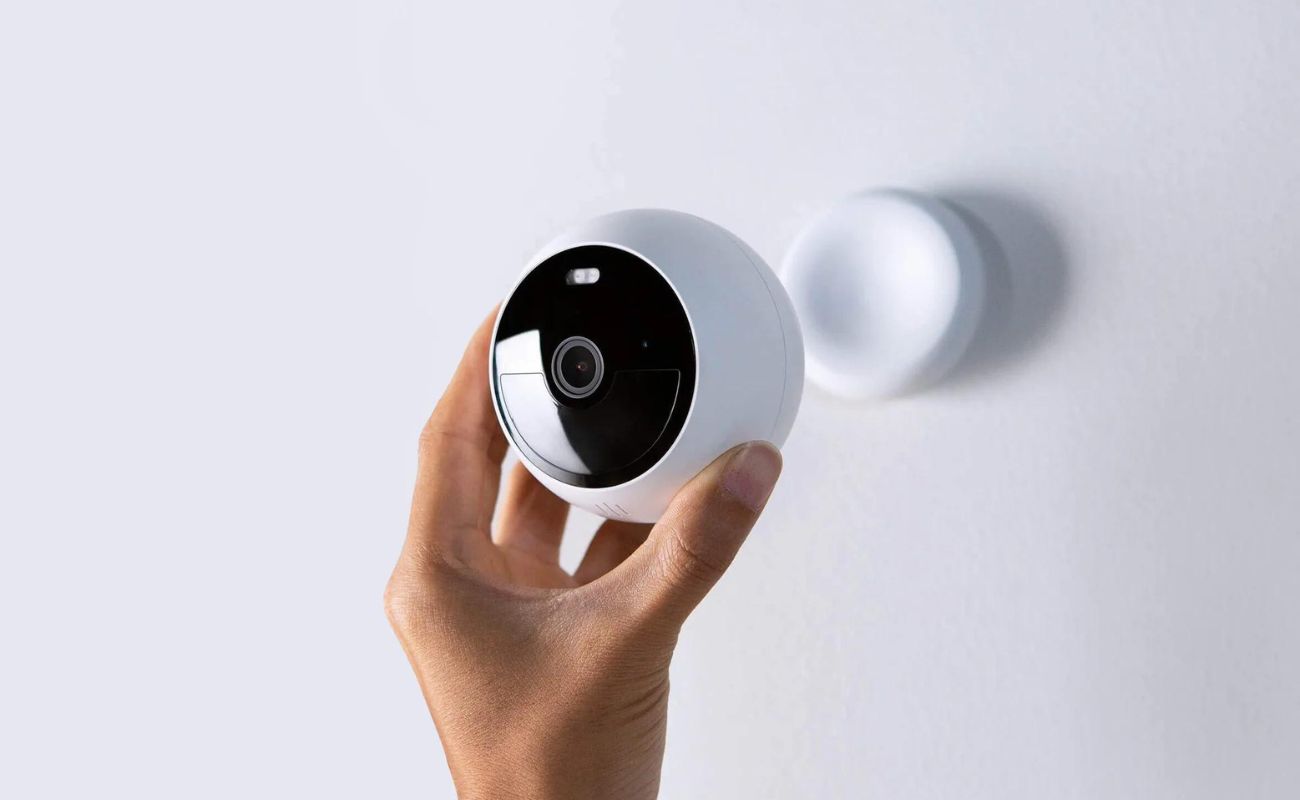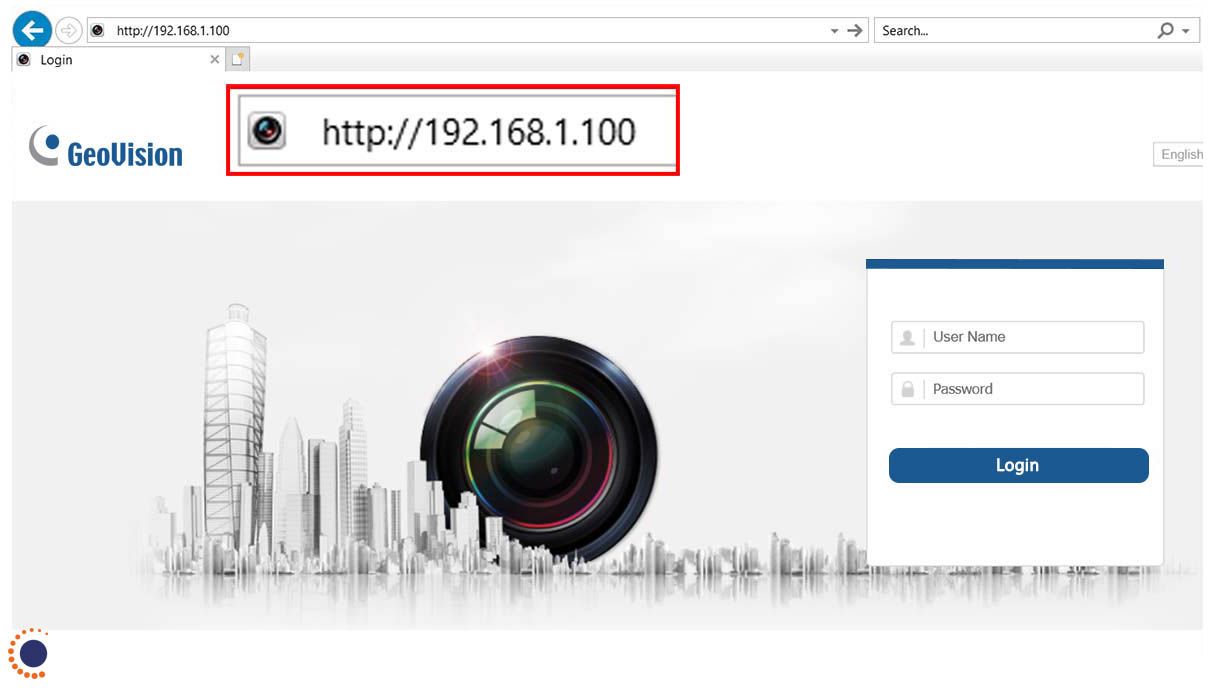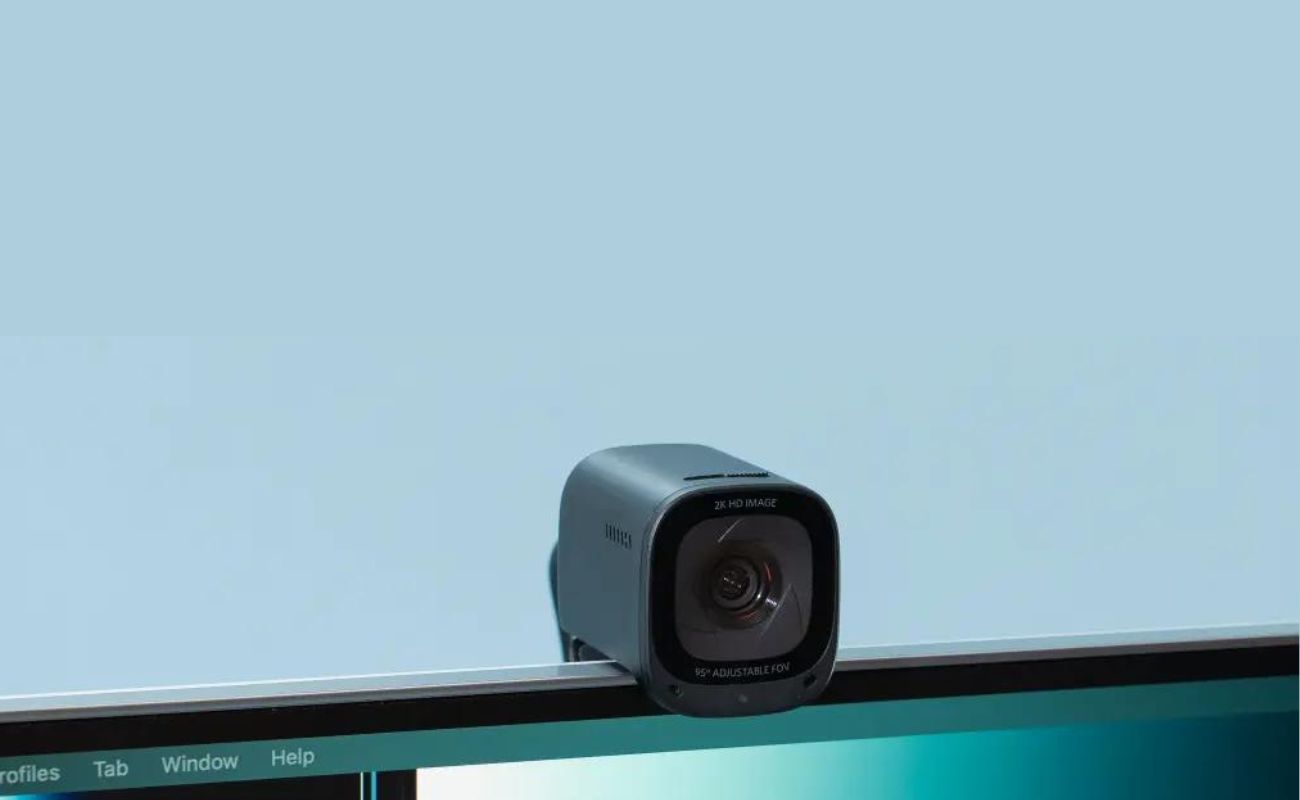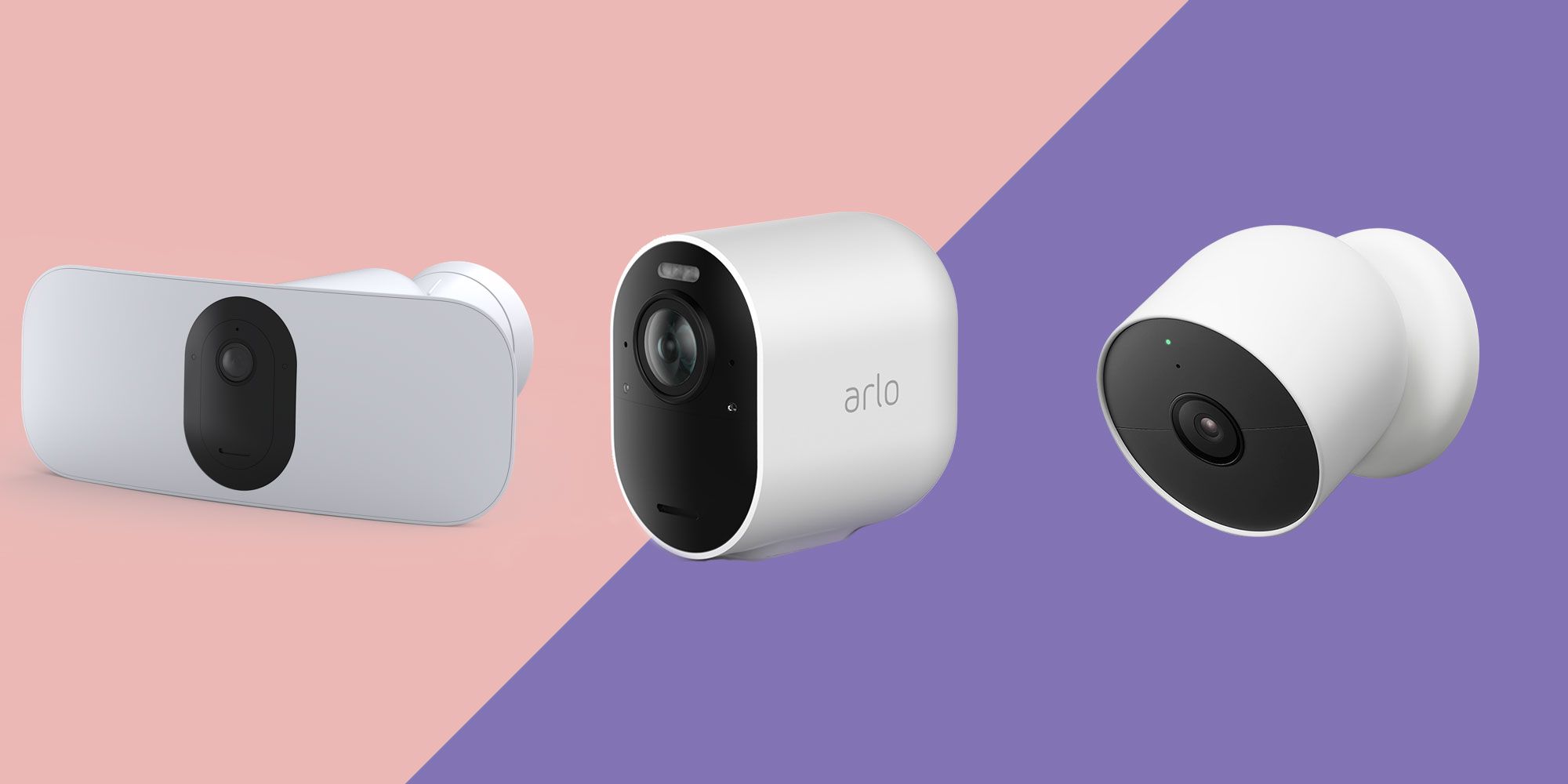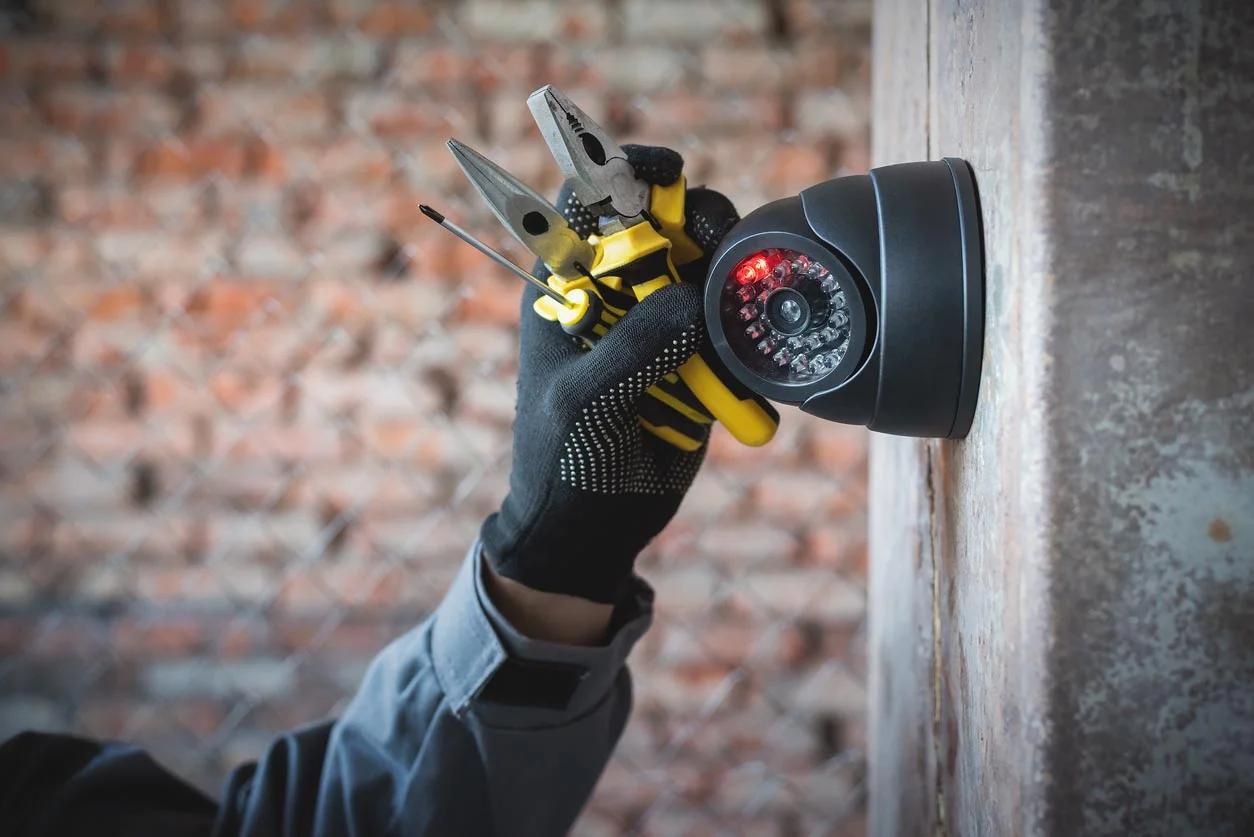Home>Home Security and Surveillance>Who Do I Call To Find Out About Wireless Security Camera
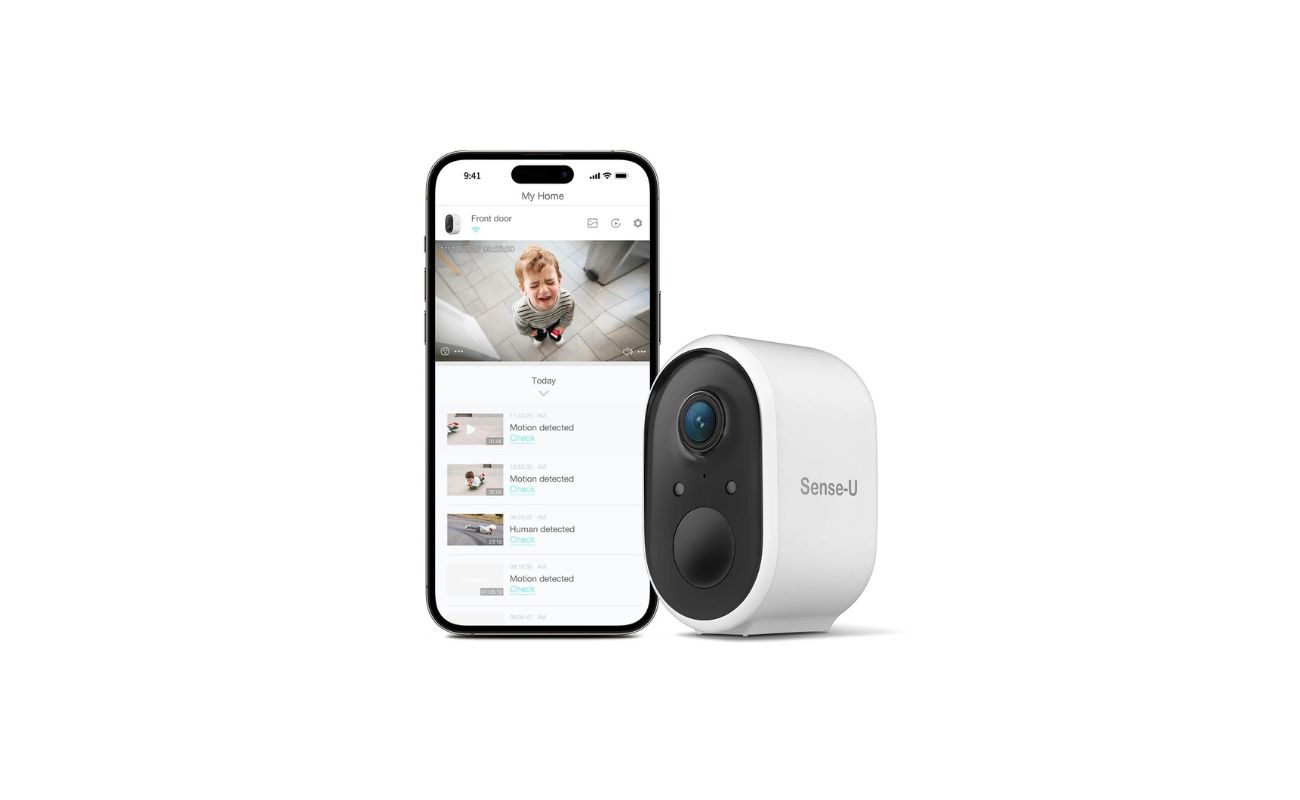

Home Security and Surveillance
Who Do I Call To Find Out About Wireless Security Camera
Modified: March 6, 2024
Looking for home security and surveillance options? Find out who to call to learn about wireless security cameras and protect your property.
(Many of the links in this article redirect to a specific reviewed product. Your purchase of these products through affiliate links helps to generate commission for Storables.com, at no extra cost. Learn more)
Introduction
Welcome to the world of wireless security cameras, where technology meets peace of mind. In today’s fast-paced and interconnected world, ensuring the safety of our homes and loved ones has become more vital than ever. Traditional security systems can be expensive, require complex installation, and often come with long-term contracts. Luckily, wireless security cameras offer a convenient and flexible alternative that allows you to monitor your property with ease.
Wireless security cameras, also known as Wi-Fi cameras or IP cameras, use your existing home Wi-Fi network to transmit video footage to your smartphone, tablet, or computer. This wireless feature eliminates the need for cumbersome wires and makes installation a breeze. Whether you want to keep an eye on the exterior of your property, monitor your baby’s nursery, or simply have a sense of security while you’re away, wireless security cameras can provide the solution you’re looking for.
In this comprehensive guide, we will delve into the world of wireless security cameras, exploring their features, benefits, limitations, and how to set up and maintain them effectively. By the end of this article, you’ll have a solid understanding of wireless security cameras and be equipped to make informed decisions about your home security needs.
So, let’s embark on this journey of exploration and discover the power of wireless security cameras to protect and safeguard what matters most to you.
Key Takeaways:
- Wireless security cameras offer easy installation, remote viewing, and advanced features for home protection, providing peace of mind and convenience for homeowners.
- Understanding the limitations, securing the system, and proper maintenance are crucial for optimizing the performance and reliability of wireless security cameras.
Read more: How To Find Wireless Security Camera?
Understanding Wireless Security Cameras
Wireless security cameras utilize advanced technology to capture and transmit video footage without the need for physical cables. These cameras are equipped with built-in Wi-Fi capabilities, allowing them to connect to your home’s wireless network. This wireless connection enables seamless communication between the camera and your mobile device or computer, giving you the ability to monitor your property remotely.
One of the key components of a wireless security camera is its image sensor, which captures the video feed. The quality of the image sensor can greatly impact the clarity and detail of the footage. Higher-end cameras often feature high-resolution image sensors that produce sharp and detailed videos, even in low-light conditions.
Another essential aspect of wireless security cameras is their motion detection capabilities. These cameras are equipped with built-in sensors that can detect movement within their field of view. When motion is detected, the cameras can send an alert to your connected device, allowing you to quickly assess the situation and take appropriate action.
Many wireless security cameras also offer advanced features like two-way audio and night vision. Two-way audio enables you to communicate with someone on the other end of the camera, making it perfect for monitoring and interacting with family members or pets. Meanwhile, night vision technology allows the camera to capture clear and detailed footage even in complete darkness, thanks to infrared LEDs.
It’s important to note that wireless security cameras require a stable and reliable internet connection to function properly. The quality and strength of your Wi-Fi signal can impact the performance of your cameras. Therefore, it’s advisable to place your wireless cameras within range of your Wi-Fi router for optimal connectivity.
With a basic understanding of how wireless security cameras work, let’s explore their importance and why they are becoming a popular choice for home security.
Importance of Wireless Security Camera Installation
Installing wireless security cameras in your home can provide numerous benefits and significantly enhance your overall security. Let’s take a closer look at why wireless security camera installation is of utmost importance.
1. Deterrence: One of the primary advantages of installing wireless security cameras is their deterrent effect. Visible cameras can act as a powerful deterrent to potential intruders and burglars. Knowing that their actions are being recorded can make would-be criminals think twice about targeting your property.
2. Remote Monitoring: Wireless security cameras allow you to monitor your property remotely from anywhere, at any time. Whether you’re at work, on vacation, or even just in another room, you can access the live video feed from your cameras on your smartphone, tablet, or computer. This provides peace of mind and the ability to respond quickly in case of any suspicious activities.
3. Evidence: In the unfortunate event of a break-in or an incident, wireless security cameras can serve as valuable evidence. The recorded footage can be crucial in identifying culprits, supporting insurance claims, or aiding law enforcement in their investigations.
4. Monitoring Loved Ones: Wireless security cameras are not limited to external surveillance. They can also be used to monitor the safety of your loved ones inside your home. Whether you want to keep an eye on your children, elderly parents, or even your pets, wireless security cameras can provide you with real-time video feed and peace of mind.
5. Peace of Mind: Perhaps the most significant advantage of wireless security cameras is the sense of peace of mind they bring. Knowing that you have a reliable and effective security system in place can significantly reduce anxiety and allow you to go about your daily activities with confidence.
6. Cost-Effective: Compared to traditional wired security systems, wireless security cameras can be more cost-effective. They eliminate the need for expensive and time-consuming wiring installation, making them a more affordable option for home security.
7. Flexibility and Scalability: Wireless security cameras are highly flexible and scalable. You can easily add or relocate cameras as your security needs change. This adaptability ensures that your security system can grow with you and be customized to meet your specific requirements.
In summary, wireless security camera installation provides a multitude of benefits, including deterrence, remote monitoring, valuable evidence, monitoring loved ones, peace of mind, cost-effectiveness, and flexibility. By investing in wireless security cameras, you can enhance the security of your home and enjoy the added convenience and protection they bring.
Factors to Consider When Choosing a Wireless Security Camera
Choosing the right wireless security camera for your home is essential to ensure that it meets your specific needs and provides effective surveillance. With a wide range of options available in the market, here are some key factors to consider when making your decision:
- Camera Resolution: The resolution of the camera determines the clarity and detail of the video footage. High-resolution cameras, such as those with 1080p or 4K resolutions, offer crisper and more detailed images for improved surveillance.
- Field of View: The field of view refers to the area that the camera can capture. A broader field of view allows for a larger coverage area, reducing the number of cameras needed for comprehensive surveillance.
- Night Vision: If you require surveillance during nighttime or in low-light conditions, consider a camera with reliable night vision capabilities. Look for cameras with infrared LEDs that provide clear footage even in complete darkness.
- Two-Way Audio: Two-way audio allows you to communicate with someone on the other end of the camera. This feature can be useful for monitoring your children, talking to delivery personnel, or even warning potential intruders.
- Motion Detection: Motion detection enables the camera to detect movement within its field of view. Look for cameras with customizable motion detection settings, as well as the ability to send alerts to your connected device when motion is detected.
- Mobile App Integration: Check if the camera is compatible with a mobile app that allows you to access live footage, receive notifications, and control camera settings remotely. Ensure that the app is user-friendly and compatible with your smartphone or tablet.
- Cloud Storage or Local Storage: Consider how the camera handles storage of recorded footage. Some cameras offer cloud storage options where the footage is stored securely in the cloud, while others may require local storage through an SD card or a separate storage device.
- Power Source: Determine whether the camera requires a power outlet or if it is battery-powered. Battery-powered cameras provide more flexibility in terms of placement, but they may require frequent battery changes or recharging.
- Weather Resistance: If you plan to install outdoor cameras, ensure that they are weather-resistant and can withstand harsh weather conditions. Look for cameras with an IP65 or IP66 rating, indicating dust and water resistance.
- Integration with Other Smart Home Devices: If you have a smart home ecosystem in place, consider cameras that can integrate with other devices, such as smart speakers or hubs, for a more comprehensive and streamlined home security system.
By considering these factors and understanding your specific needs, you can make an informed decision and choose a wireless security camera that provides optimal surveillance and meets your expectations.
Types of Wireless Security Cameras
Wireless security cameras come in various types, each with its own features and functionalities. Understanding the different types can help you choose the one that best suits your surveillance needs. Here are some common types of wireless security cameras:
- Indoor Cameras: As the name suggests, indoor cameras are designed for indoor use. They are compact, easy to install, and often come with features like two-way audio and motion detection. Indoor cameras are ideal for monitoring the interior of your home, such as entryways, living rooms, or nurseries.
- Outdoor Cameras: Outdoor cameras are specifically designed to withstand outdoor conditions, including rain, dust, and extreme temperatures. They often have weather-resistant casings and are equipped with night vision capabilities. Outdoor cameras provide surveillance for the exterior of your home, including driveways, gardens, and entrances.
- Dome Cameras: Dome cameras are named for their dome-shaped housing. They offer a wide field of view and are often used for monitoring large areas. Dome cameras can be mounted on walls or ceilings and are less intrusive, making them suitable for both indoor and outdoor use.
- Bullet Cameras: Bullet cameras, also known as bullet-style cameras, are long and cylindrical in shape. They are designed for long-range viewing and often come with advanced optical zoom capabilities. Bullet cameras are typically used for outdoor surveillance, such as large yards, parking lots, or perimeters.
- PTZ Cameras: PTZ (Pan-Tilt-Zoom) cameras offer remote control over the camera’s movement and zoom functions. They can pan horizontally, tilt vertically, and zoom in or out to capture specific areas of interest. PTZ cameras are commonly used in areas requiring active monitoring, such as large properties or commercial spaces.
- Wire-Free Cameras: Wire-free cameras, also known as battery-powered cameras, provide the ultimate flexibility in terms of placement. They are completely wireless and run on batteries, eliminating the need for power outlets or wiring. Wire-free cameras are easy to install and can be placed virtually anywhere, making them ideal for temporary surveillance or locations where running wires is challenging.
- Hidden Cameras: Hidden cameras are designed to be discreet and blend into the surrounding environment. They can be disguised as everyday objects like clocks, smoke detectors, or even electrical outlets. Hidden cameras are commonly used for covert surveillance or to observe specific areas without drawing attention.
When choosing a wireless security camera, consider the specific location, purpose, and surveillance requirements. Different camera types offer varying features and functionalities, so selecting the right type ensures that you get the best surveillance coverage for your home or property.
Benefits of Wireless Security Cameras
Wireless security cameras offer numerous benefits that make them a popular choice for home surveillance. Let’s explore some of the key advantages of using wireless security cameras:
- Easy Installation: Wireless security cameras are incredibly easy to install compared to traditional wired cameras. They do not require complex wiring or drilling holes in walls. Simply mount the camera in the desired location, connect it to your Wi-Fi network, and you’re ready to go.
- Flexibility in Placement: Since wireless security cameras don’t rely on physical cables, they offer more flexibility in placement. You can easily move or relocate the cameras to different areas of your property without the hassle of rewiring. This adaptability allows you to adjust your surveillance coverage as needed.
- Remote Viewing: One of the biggest advantages of wireless security cameras is the ability to remotely view the footage. By connecting the camera to a mobile app or a web portal, you can access the live video feed from anywhere using your smartphone, tablet, or computer. This feature allows you to monitor your property in real-time, even when you’re away.
- Expandable System: Wireless security camera systems are highly scalable and can be easily expanded to accommodate additional cameras. Whether you want to increase coverage in specific areas or add cameras to other parts of your property, wireless systems can be expanded without the need for extensive rewiring.
- Cost-Effective: Wireless security cameras are generally more cost-effective than wired systems. They eliminate the need for expensive installation and labor costs associated with wiring, making them a more affordable option. Additionally, wireless cameras can be a one-time investment without the need for monthly monitoring fees.
- Intuitive User Experience: Many wireless security camera systems come with user-friendly mobile apps or web interfaces that provide intuitive control and configuration options. These interfaces allow you to customize various settings, receive motion detection alerts, view recorded footage, and control other features of the cameras with ease.
- Deterrence: The presence of visible security cameras can act as a powerful deterrent to potential intruders. Knowing that their actions are being recorded can make criminals think twice about targeting your property. Wireless security cameras provide a layer of protection that can help prevent unwanted incidents.
- Evidence Collection: In the unfortunate event of a break-in or incident, wireless security cameras play a crucial role in collecting valuable evidence. The recorded footage can be used to identify perpetrators, aid in investigations, and support insurance claims, increasing the chances of resolution and justice.
Wireless security cameras offer convenience, flexibility, remote accessibility, and cost-effectiveness, while still providing reliable surveillance for your home or property. By harnessing the power of wireless technology, you can enhance the security of your surroundings and gain peace of mind.
Limitations of Wireless Security Cameras
While wireless security cameras offer numerous benefits, it’s essential to understand their limitations. Here are some common limitations to consider:
- Dependence on Wi-Fi: Wireless security cameras rely on a stable Wi-Fi connection. If the Wi-Fi signal is weak or unreliable, it may lead to video lag, interruptions in the feed, or failure in transmitting footage. To mitigate this, ensure your cameras are within range of a strong Wi-Fi signal or consider using Wi-Fi extenders.
- Interference: Wireless signals can be prone to interference from other devices or electronic equipment. Neighboring Wi-Fi networks, cordless phones, microwaves, and even metal objects can disrupt the signal. To reduce interference, select a wireless security camera system that operates on less crowded frequency bands, such as 5GHz.
- Battery Life (Wire-Free Cameras): Wire-free cameras that run on batteries have limited battery life. Depending on usage and camera settings, the batteries may need to be replaced or recharged frequently, posing a potential inconvenience. Consider using power-saving features or opting for cameras that offer longer battery life or alternative power options.
- Limited Range: The range of wireless security cameras can be limited by several factors, including the distance from the cameras to the Wi-Fi router and interference from walls or other obstacles. To ensure optimal performance, be mindful of the camera’s range specifications and consider using Wi-Fi range extenders if necessary.
- Video Quality: While wireless security cameras offer high-resolution options, the actual video quality can be impacted by factors such as signal strength and available bandwidth. If the Wi-Fi signal is weak, it may result in lower video quality or pixelated footage. Ensure a strong and stable Wi-Fi connection for the best video performance.
- Security Risks: Wireless security cameras that are connected to the internet can be vulnerable to hacking or unauthorized access. To mitigate this risk, make sure to choose cameras from reputable manufacturers, keep firmware up to date, use strong passwords, and secure your home network with encryption.
- Weather Conditions: While outdoor wireless security cameras are designed to withstand weather conditions, extreme temperatures, heavy rain, or prolonged exposure to direct sunlight can impact their performance. It’s crucial to choose cameras specifically designed for outdoor use and ensure they have the appropriate weather resistance ratings.
- Bandwidth Usage: Continuous streaming of video footage from wireless security cameras can consume significant bandwidth on your home network. This can potentially slow down other internet activities or strain your network if multiple cameras are in use. Consider upgrading your internet plan or using cameras with adjustable streaming quality settings to manage bandwidth usage.
Understanding these limitations can help you make informed decisions when selecting and setting up wireless security cameras. By proactively addressing these concerns, you can optimize the performance and reliability of your surveillance system.
How to Set Up a Wireless Security Camera System
Setting up a wireless security camera system may seem daunting, but with proper guidance, it can be a straightforward process. Here are the general steps to follow when setting up your wireless security camera system:
- Plan Camera Placement: Begin by determining the areas you want to monitor and the best camera placement for optimal coverage. Consider factors such as entry points, blind spots, and high-risk areas. This planning phase is crucial for maximizing the effectiveness of your surveillance system.
- Choose the Right Cameras: Select wireless security cameras that meet your specific needs and requirements. Consider factors like resolution, field of view, night vision, and additional features such as motion detection or two-way audio. Ensure the cameras are compatible with your Wi-Fi network and have adequate storage options.
- Set Up the Base Station/Hub: If your wireless security camera system requires a base station or hub, follow the manufacturer’s instructions to set it up. Connect the base station to your Wi-Fi router using an Ethernet cable and ensure it has a strong and stable internet connection.
- Connect the Cameras: Power on each wireless camera and follow the manufacturer’s instructions to connect them to the base station or directly to your Wi-Fi network. This usually involves scanning QR codes or entering unique device codes to establish the connection.
- Position and Mount the Cameras: Install the cameras in the designated locations based on your earlier planning. Use the included mounting hardware and follow the manufacturer’s instructions to secure the cameras in place. Ensure they are positioned at the desired angles for optimal coverage.
- Configure Camera Settings: Access the camera settings either through a mobile app or a web interface. Customize settings such as motion detection sensitivity, video quality, recording schedules, and notification preferences. Set up any additional features like two-way audio or cloud storage, if applicable.
- Test and Fine-Tune: Once the cameras are mounted and configured, test the system to ensure everything is functioning correctly. Check the live video feed, verify motion detection, and test remote access from your mobile device or computer. Fine-tune the camera positions and settings as needed.
- Secure Your System: Protect your wireless security camera system from unauthorized access by following recommended security practices. Change default passwords, update firmware regularly, enable encryption, and secure your Wi-Fi network with a strong password. Regularly monitor for any firmware updates or security patches from the manufacturer.
- Monitor and Maintain: With your wireless security camera system set up, establish a routine for monitoring and maintenance. Regularly check the cameras and their footage for any issues or anomalies. Clean the lenses if needed and ensure the cameras have adequate power supply or battery charge.
Remember to refer to the specific instructions provided by your camera manufacturer for detailed setup and configuration steps. By following these general guidelines, you can successfully set up a wireless security camera system and enjoy the benefits of enhanced home surveillance.
Ensuring the Security of Wireless Security Cameras
While wireless security cameras provide valuable surveillance for your home, it’s essential to prioritize their security to prevent unauthorized access or privacy breaches. Here are some important steps to ensure the security of your wireless security cameras:
- Change Default Passwords: One of the most critical steps is to change the default passwords on your wireless security cameras. Use strong, unique passwords that include a combination of letters, numbers, and special characters. Avoid using easily guessable passwords or reusing passwords from other accounts.
- Update Firmware: Keep your cameras up to date by regularly checking for firmware updates from the manufacturer. Firmware updates often include security patches and bug fixes that enhance the overall security and performance of the cameras. Enable automatic updates if available.
- Secure Your Wi-Fi Network: Protect your wireless security camera system by securing your Wi-Fi network with a strong password and encryption. Use WPA2 or higher encryption standards, disable remote administration access, and consider implementing MAC address filtering to allow only authorized devices to connect.
- Isolate Cameras on a Guest Network: Consider setting up a separate guest network for your wireless security cameras. This network should be isolated from your main network, preventing potential access to other devices connected to your home network in case of a security breach.
- Enable Two-Factor Authentication: Many wireless security camera systems offer two-factor authentication as an additional layer of security. Enable this feature to require a second form of verification, such as a code sent to your smartphone, when logging into your camera system.
- Regularly Check Camera Settings: Periodically review and audit your camera settings to ensure they are configured correctly. Verify that motion detection, video recording, and notification preferences are set according to your requirements. Disable any unnecessary features or permissions that could potentially compromise your security.
- Monitor Network Traffic: Keep an eye on your network traffic to detect any suspicious or unauthorized activity. Use network monitoring tools or consider using a security solution that provides visibility into the devices connected to your network and the data being transmitted.
- Secure Physical Access: Protect your cameras from tampering or theft by ensuring they are mounted in secure locations. If feasible, use tamper-resistant mounts or enclosures. If your cameras are easily accessible, it increases the risk of unauthorized physical access.
- Regularly Assess Security Practices: Stay informed about the latest security best practices and keep up to date with any security advisories from the camera manufacturer. Regularly assess your security practices and make any necessary adjustments to ensure the ongoing security of your wireless security camera system.
By following these steps and being proactive about security measures, you can safeguard your wireless security camera system and maintain the privacy and integrity of your home surveillance. Remember, investing in security also means investing in your peace of mind.
Read more: How Do Wireless Security Cameras Work
Maintenance and Troubleshooting of Wireless Security Cameras
Maintaining and troubleshooting your wireless security cameras is essential to ensure their optimal performance and longevity. Here are some important maintenance tips and troubleshooting steps to help you keep your wireless security camera system running smoothly:
Maintenance Tips:
- Regular Cleaning: Clean the camera lenses periodically to remove any dust, dirt, or smudges that may affect the image quality. Use a soft, lint-free cloth or lens cleaning solution to gently wipe the lenses without scratching them.
- Check Power Connections: Ensure that the power connections for your cameras are secure and free from any damage or loose connections. Regularly inspect the power cables or batteries of wire-free cameras to ensure they are in good condition.
- Monitor Battery Life: If you have wire-free cameras, keep an eye on the battery life and recharge or replace batteries as needed. Some cameras offer low-battery alerts or notifications, making it easier to track battery levels.
- Inspect Mounting Hardware: Check the mounting hardware of your cameras regularly to ensure they are secure and properly tightened. Loose or unstable mounting can affect the camera’s position, image quality, and coverage.
- Review Recording Storage: If your cameras utilize local storage or cloud storage for recording footage, periodically review and manage the storage capacity. Delete unnecessary or outdated recordings to free up space and ensure continuous recording functionality.
- Update Firmware: Stay up to date with the latest firmware releases from the camera manufacturer. Regularly check for firmware updates and apply them to benefit from improved performance, security enhancements, and new features.
Troubleshooting Steps:
- Check Power Supply: If a camera is not functioning, ensure it is receiving power. Verify that the power cables are properly connected, and if using wire-free cameras, ensure the batteries are charged or replaced if necessary.
- Verify Wi-Fi Connection: If a camera is not connecting to your Wi-Fi network, check the Wi-Fi signal strength in that area. Consider repositioning the camera closer to the router or using a Wi-Fi extender to improve the signal.
- Reboot Camera and Base Station: If you encounter connectivity issues or camera malfunctions, try rebooting the camera and the base station (if applicable). Power off the devices, wait a few seconds, and then power them back on.
- Reset Camera Settings: If you are experiencing persistent issues with a camera, try resetting its settings to the factory defaults. Consult the camera’s user manual or manufacturer’s website for instructions on how to perform a reset.
- Update Camera App: If you are facing issues with the camera’s mobile app, check for updates in the app store and install any available updates. Outdated app versions can sometimes cause compatibility issues or performance problems.
- Contact Manufacturer Support: If troubleshooting steps do not resolve the issue, reach out to the manufacturer’s support team for further assistance. They can provide specific guidance and help troubleshoot any hardware or software-related issues.
By following proper maintenance practices and troubleshooting steps, you can address common issues and ensure the smooth operation of your wireless security camera system. Regular maintenance and prompt troubleshooting can contribute to a reliable and efficient surveillance solution for your home or property.
Frequently Asked Questions about Wireless Security Cameras
Read more: How To Find Out About Construction Projects
1. Are wireless security cameras easy to install?
Yes, wireless security cameras are generally easy to install. They don’t require complex wiring or drilling holes in walls. Mount the cameras in the desired locations, connect them to your Wi-Fi network, and you’re good to go. However, it’s important to follow the manufacturer’s instructions for proper installation.
2. Can wireless security cameras work without an internet connection?
Wireless security cameras require an internet connection to transmit video footage. However, some cameras offer local storage options, such as SD cards, where footage can be saved even without an internet connection. An internet connection is necessary to access the live video feed remotely.
3. Can I view the footage from my wireless security cameras on my smartphone?
Yes, most wireless security cameras provide mobile app integration, allowing you to view the live video feed, receive motion detection alerts, and control camera settings from your smartphone or tablet. Simply download the camera’s associated app, connect it to your camera system, and you can access the footage remotely.
4. Do wireless security cameras have night vision capabilities?
Many wireless security cameras come equipped with night vision capabilities. They use infrared LEDs to illuminate the area and capture clear video footage, even in complete darkness. When choosing a wireless security camera, check for night vision specifications to ensure it meets your nighttime surveillance requirements.
5. Are wireless security cameras secure?
Wireless security cameras can be secure if proper security measures are taken. Change default passwords, keep firmware updated, secure your Wi-Fi network, enable two-factor authentication if available, and regularly monitor the camera settings. Following these practices can help protect against unauthorized access and ensure the security of your wireless camera system.
6. Can I connect multiple wireless security cameras to one mobile app?
Yes, most wireless security camera systems allow you to connect multiple cameras to one mobile app. This enables you to monitor and manage all the cameras from a single interface. Check the camera manufacturer’s specifications to ensure compatibility and the maximum number of cameras that can be connected to the app.
7. Can I add additional cameras to my existing wireless security camera system?
Yes, wireless security camera systems are often expandable, allowing you to add additional cameras as your monitoring needs evolve. However, ensure that the new cameras are compatible with your existing system and follow the manufacturer’s instructions for adding and configuring new cameras.
8. Are wireless security cameras suitable for outdoor use?
Yes, there are wireless security cameras specifically designed for outdoor use. These cameras typically come with weather-resistant casings and have features like night vision to capture clear footage even in challenging outdoor conditions. Look for cameras with high weather resistance ratings (IP65 or higher) for optimal performance.
Read more: How Do Wireless Security Cameras Get Power?
9. Do wireless security cameras require monthly fees?
Wireless security cameras themselves do not require monthly fees for basic functionality. However, cloud storage and additional features like advanced motion detection or professional monitoring services may involve subscription fees. Evaluate the specific camera and service options to determine if any recurring fees apply.
10. Can wireless security cameras be used as baby monitors?
Yes, wireless security cameras can be used as baby monitors. Many models offer two-way audio, allowing you to remotely communicate with your baby. With mobile app integration, you can conveniently monitor your baby’s room from your smartphone or tablet, receiving real-time video and audio feed.
These are common questions related to wireless security cameras. It’s always recommended to refer to the user manual or consult the manufacturer for specific information regarding your wireless security camera model.
Conclusion
Wireless security cameras offer a convenient, flexible, and effective solution for protecting your home and loved ones. With their easy installation, remote viewing capabilities, and advanced features, wireless security cameras have become a popular choice among homeowners seeking to enhance their home security system.
In this comprehensive guide, we explored the world of wireless security cameras, understanding their functionality, importance, and various types available. We discussed the benefits they offer, such as deterrence, remote monitoring, evidence collection, and peace of mind. Additionally, we acknowledged the limitations of wireless security cameras, including dependence on Wi-Fi, limited range, and security risks, and we provided tips for overcoming these challenges.
To ensure a successful setup of your wireless security camera system, we outlined the steps for installation, offered maintenance tips, and troubleshooting advice to address potential issues. We also highlighted the significance of securing your wireless security cameras to protect against unauthorized access and privacy breaches.
Lastly, we addressed frequently asked questions about wireless security cameras, covering topics like installation ease, internet connectivity requirements, mobile app integration, night vision capabilities, and the suitability of wireless security cameras for various purposes.
Remember, when choosing wireless security cameras, consider factors such as camera resolution, field of view, night vision, motion detection, and mobile app integration. Assess your specific surveillance needs and the layout of your property to determine the best camera types and locations for optimal coverage.
By following best practices, ensuring proper maintenance, and prioritizing security measures, you can harness the power of wireless security cameras to protect your home, monitor your loved ones, and gain peace of mind. So, take the necessary steps to enhance your home security and embrace the benefits that wireless security cameras have to offer.
Frequently Asked Questions about Who Do I Call To Find Out About Wireless Security Camera
Was this page helpful?
At Storables.com, we guarantee accurate and reliable information. Our content, validated by Expert Board Contributors, is crafted following stringent Editorial Policies. We're committed to providing you with well-researched, expert-backed insights for all your informational needs.
